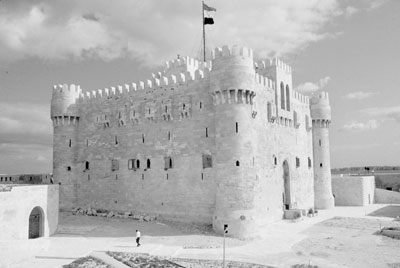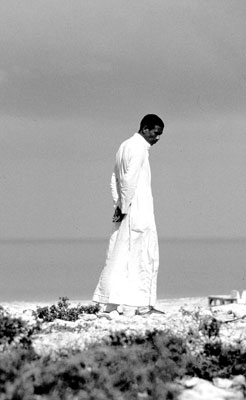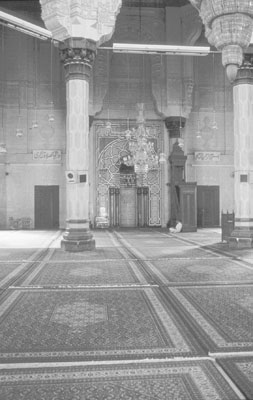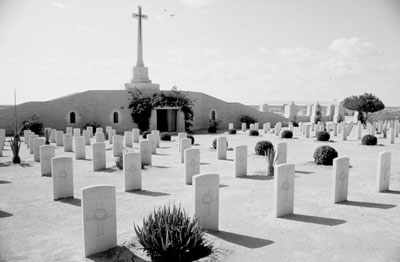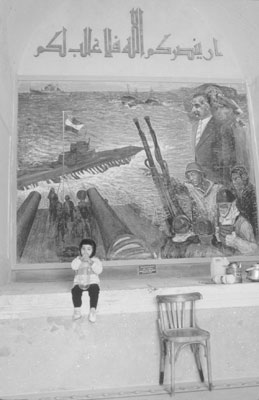Seeking the Pharos Lighthouse
by Ed Kinney
Lloyd McCune, a favorite of many longtime readers of ITN, mailed me a French newspaper article shortly before he died. The article described a recent survey of ancient ruins that, due to earthquakes and sea erosion beginning in the fifth century, B.C., lie in the harbor waters of Alexandria, Egypt. While struggling with the translation, I couldn’t help but remember the visit my wife, Moreen, and I made to Alexandria about eight years ago.
One of the wonders
Similar to Alexander the Great, we too visited this city, named in his honor, before we followed his travels to Siwa, Egypt, where in 331 B.C. he sought to legitimatize his successors on the throne of the Egyptian pharaohs (Sept. ’00, pg.163). He never returned to Alexandria until he was taken back for burial following his death in Babylon, Iraq, in 323 B.C.
Like many, we assumed Alexandria would be another overcrowded city with little to offer except an opportunity to visit where the Pharos Lighthouse, one of the seven wonders of the ancient world, once stood. Though nothing visible remains of the lighthouse, its aura continues.
This wonder of white marble was designed and built in 270 B.C. by the Greek architect Sostratus. According to records, it stood over 400 feet high and had a square base, an octagonal midsection and a circular top. In the top, a fire blazed continuously for over 900 years as a beacon for ships in the Mediterranean.
The lighthouse also reputedly had a mirror mounted on its top that could focus the sun’s rays to set fire to enemy ships. In 214 B.C., the famous Greek scientist Archimedes used a similar weapon against Rome’s (Marcellus’) invading ships in defense of Syracuse, Sicily.
The Pharos Lighthouse was partially dismantled following the Arab capture of Alexandria in A.D. 642. A mosque was later built on the site following an earthquake in about A.D. 1100, but another earthquake in A.D. 1375 completed the destruction of both.
In the 1480s, Fort Qaitbey (the Citadel of Qaitbey) was built on the lighthouse site partially of the lighthouse stones. Today this impressive fort, rebuilt following an English bombardment in 1882, is used as a marine museum.
Local Alexandria highlights
Less than a mile from Fort Qaitbey there is another wonderful reconstruction, the Mosque of Abu al-Abbas al-Mursi. He is an Andalusian saint and, at the present site, initially a small mosque was built during the 13th century honoring him. It was renovated in 1775 and placed over the saint’s tomb, and in 1943 it was completely rebuilt.
This unusual and modern mosque has an octagonal shape plus four domes and a 3-stage, 240-foot minaret. In order to view its interior eight granite columns and eight colonnade arches, Moreen entered one entrance and I another. Though men and women are separated inside by a 2-foot low railing, our woman guide easily explained the importance of Alexandria’s largest mosque to us as a group.
In the southwestern section of Alexandria stands the Ptolemaic Temple of Serapis and Pompey’s Pillar on the highest hillside in the city. These statues were built in A.D. 300 to honor Diocletian, who saved Alexandria from famine before he began persecuting Christians. The name “Pompey’s Pillar” comes from an incorrect impression that this tomb contained the venerated head of Pompey. Both statues are in surprisingly good condition and photogenic, especially when compared with the nearby Roman ruins and Catacombs of Kom es Chogafa, a second-century-A.D. burial site.
In most cities, especially in the Middle East, we enjoy walking the streets, doing a little window shopping and observing locals. Streets surrounding tourist hotels like those in Alexandria normally lack the true atmosphere of a city, so twice our youthful guide took us to tea shops frequented by locals. Normally, they cater only to men, but since Moreen is Western she was permitted to enter with me.
The owners were polite but reserved when explaining how to smoke water pipes. None showed it, but they must have been amused by our expressions when we tried the water pipes, especially since we don’t smoke.
El-Alamein Cemetery
History buffs will hopefully visit the War Museum and British Commonwealth Cemetery at el-Alamein (Al-Alamayn), located about 70 miles west of Alexandria. It was here in late 1942 that British General Montgomery stopped German Field Marshall Rommel’s drive to capture the Nile Valley and the Suez Canal. This was one of the first major defeats suffered by Nazi Germany during WWII.
This very clean and simple cemetery has 7,500 burial crosses and symbols of other religions plus the names of 12,000 missing inscribed on a wall, all surrounded by small bushes and trees. Nearby, on this same road to Marsa Matruh, Egypt, are German and Italian cemeteries for their North African WWII dead.
Minutiae
• The Greeks compiled the seven wonders of the ancient world: the Colossus of Rhodes, the Pyramids of Giza, the Hanging Gardens of Babylon, the Statue of Zeus at Olympia, the Great Temple of Artemis at Ephesus, the Tomb of King Mausolus at Halicarnassus and the Pharos Lighthouse of Alexandria.
Since the Greeks hated Persians, they didn’t include the incredible Iranian city of Persepolis. Also, the Great Wall of China wasn’t included as the Greeks had never heard of it.
Some travelers record the number of countries visited, while others keep track of the time zones they’ve set foot in. One of my travel pleasures is viewing the many wonders of the ancient world. Possibly, one day, I’ll be able to visit the few ruins remaining of the Hanging Gardens of Babylon near the Euphrates River in Iraq.
• On our 1996 trip we traveled in Egypt with a company based in England that is no longer in business.
• For further information about Alexandria, contact the Egyptian Tourist Authority at either 630 Fifth Ave., Ste. 1706, New York, NY 10111 (phone 212/332-2570 or e-mail egyptoursp@aol.com). . . or 8383 Wilshire Blvd., Ste. 215, Beverly Hills, CA 90211 (phone 323/653-8815 or e-mail egypt@etala.com). Their website, http://touregypt.net, is excellent.
• Those traveling to countries discussed in this column should always use common sense, especially in these tense times.
Coming up
Next let’s travel the back roads from Marseille, France, to Granada, Spain, on a photographic journey studying the Moorish influence in this area of Europe.

